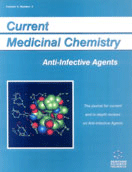Abstract
The aminocoumarin antibiotics novobiocin, clorobiocin and coumermycin A1 are potent inhibitors of DNA gyrase. They compete with ATP for binding to the B subunit of this enzyme and inhibit the ATP-dependent DNA supercoiling catalysed by gyrase. Cloning, sequencing and analysis of the biosynthetic gene clusters for novobiocin, clorobiocin and coumermycin A1 revealed that the structural differences and similarities of these antibiotics are perfectly reflected by the genetic organisation of the clusters. In the last four years, the function of most of the biosynthetic genes for these antibiotics could be identified by gene inactivation experiments as well as by heterologous expression in Escherichia coli or Streptomyces lividans as His6-tag or GST-tag fusion proteins. Using the information from the biosynthetic gene clusters, more than 50 new aminocoumarin derivatives have been produced by combinatorial biosynthesis, by mutasynthesis experiments or by chemoenzymatic synthesis. The biological activities of the new aminocoumarines were evaluated against E. coli gyrase and various bacterial strains. The results showed that the acyl moieties at 3-OH as well as the methyl group at 4-OH of noviose are essential for the biological activity; the methyl group and the chlorine atom at 8-position of the coumarin ring also play an important role. Aminocoumarins with a pyrrole moiety at 2-OH instead of 3-OH showed reduced biological activity. Ring A of novobiocin and clorobiocin is also involved in the interaction with gyrase.
Keywords: aminocoumarin, biosynthetic genes, chemoenzymatic synthesis, gene inactivation, gyrase inhibitor, heterologous expression, hybrid antibiotic, mutasynthesis experiments, streptomyces
 3
3

